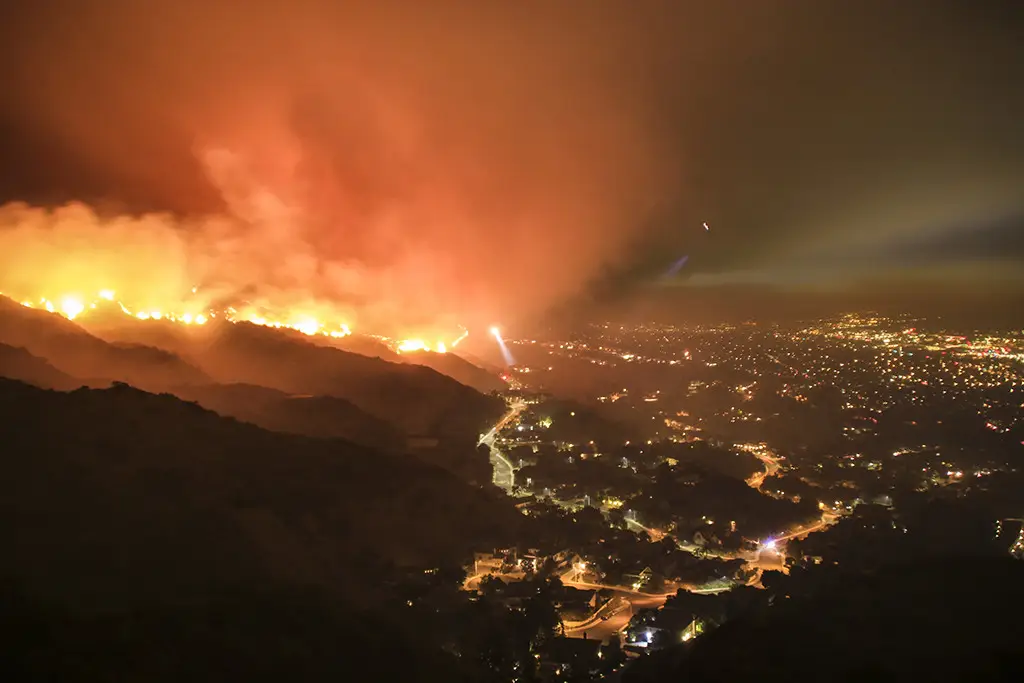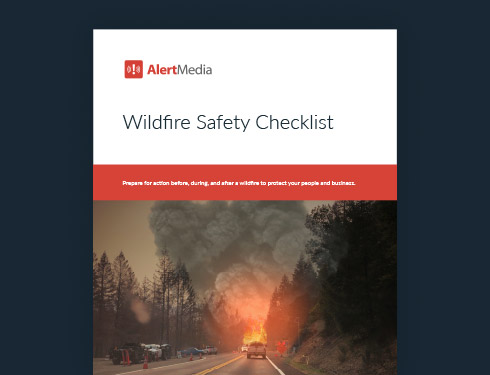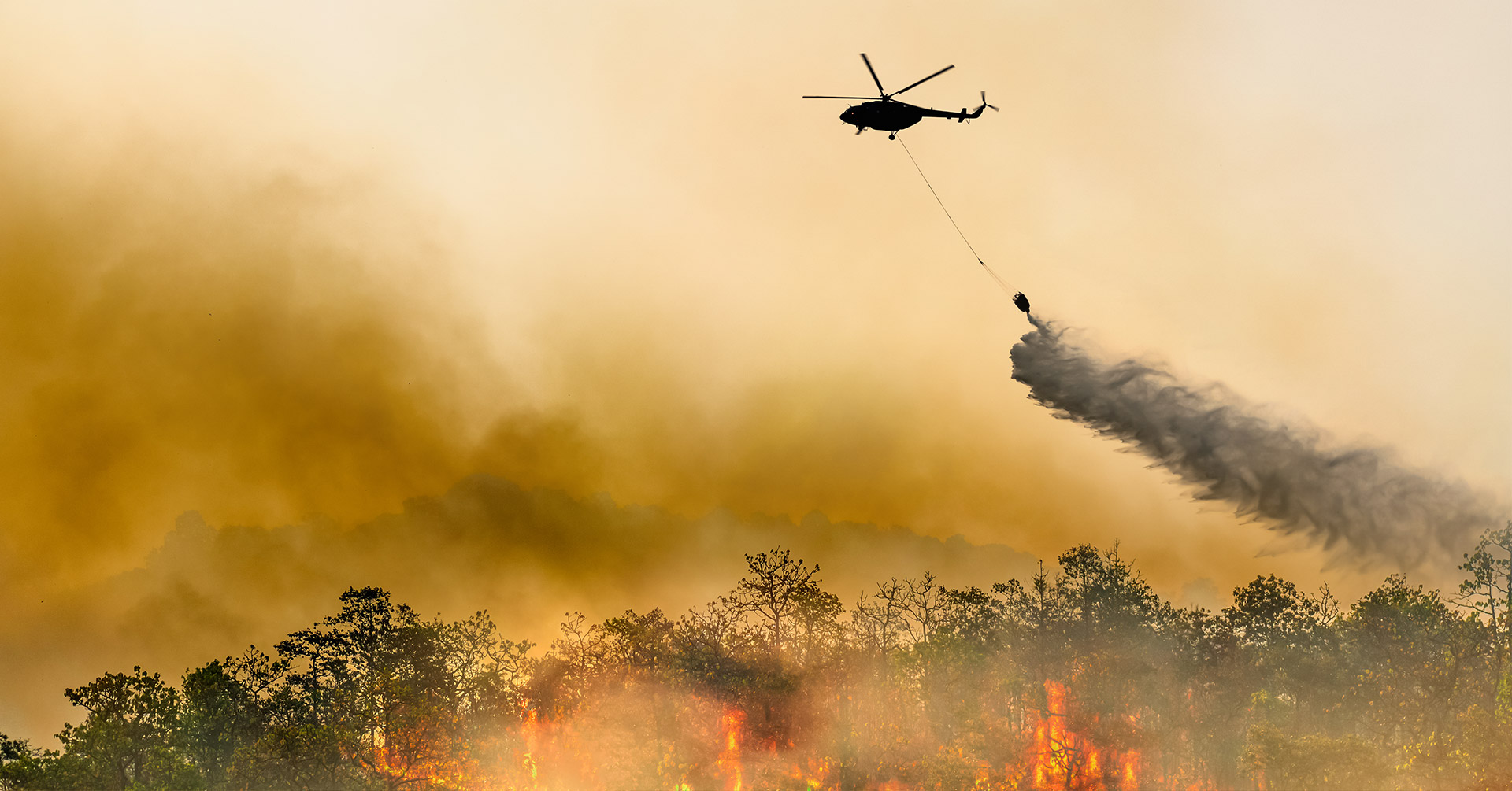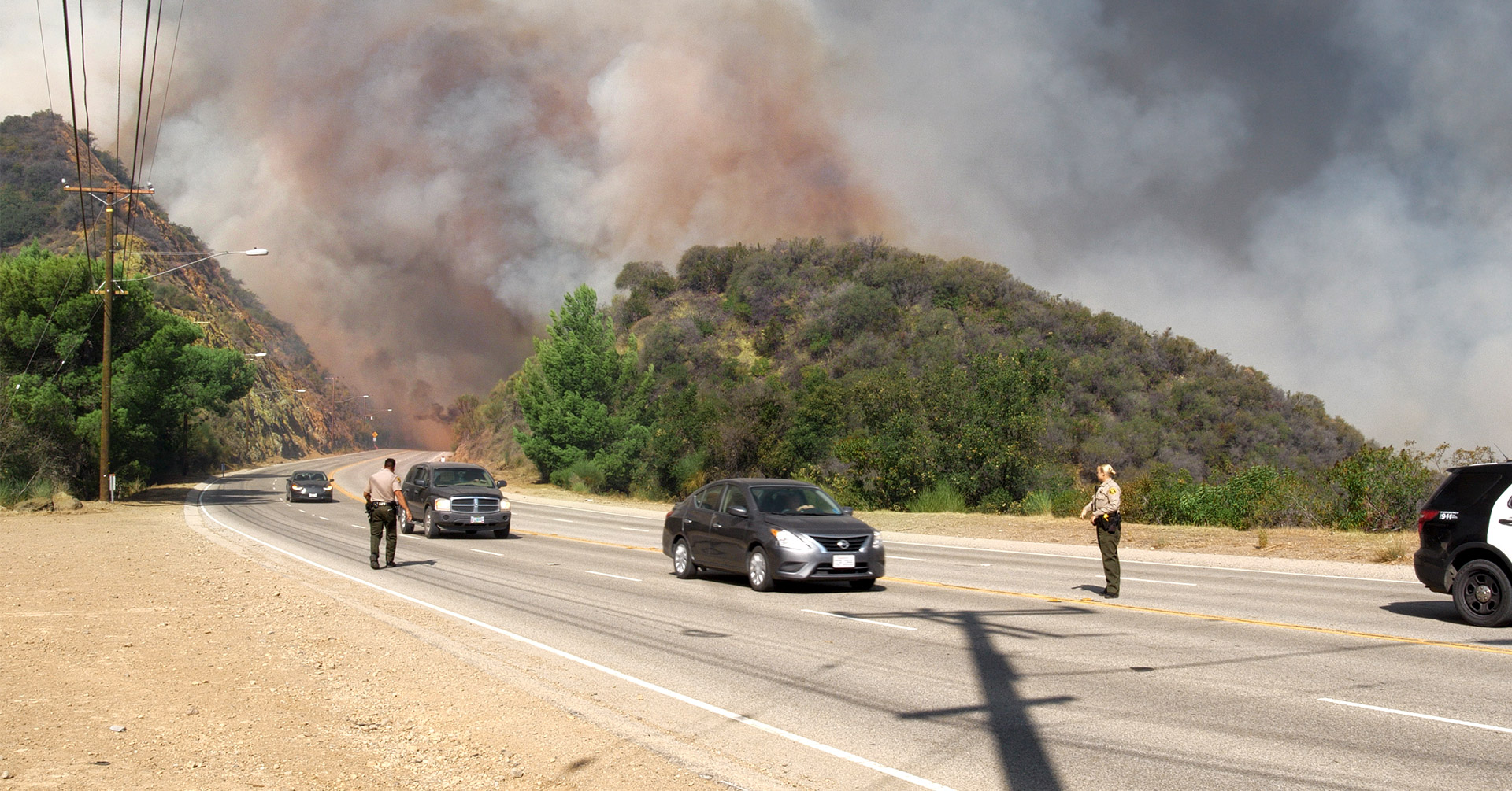
The True Impact of Wildfires on Business
What is at stake if a wildfire were to catch you off guard? The impact of wildfires on business is astounding, and companies need to be ready with proactive planning.

Wildfires can break out at any moment, putting homes and businesses at risk. Whether from a lightning strike, a fallen electrical pole, a discarded cigarette, or a campfire—a single spark can quickly erupt into a massive wildfire that causes irreparable damage.
The impact of wildfires on business is far-reaching, but there are proactive steps companies can take.
The Devastation of Wildfires
According to the National Oceanic and Atmospheric Administration (NOAA), the month of August averages over 8,000 wildfires—and over one and a half million acres of damage.
This year’s wildfire season has already been especially devastating. Wildfires have destroyed over 1 million acres of land this year—putting millions of Americans under wildfire warnings and smoke advisories.
Fighting these fires consumes massive amounts of resources. For example, 2021’s Dixie Fire in California ended up as the most destructive wildfire of the year, causing roughly $637 million in damage. Wildfires cause widespread damage—destroying land, buildings, homes, transportation routes, wildlife, and agriculture. Even worse, they end up injuring and taking the lives of many people.
Wildfires vs. Other Natural Disasters
Wildfires have a unique profile compared to other natural disasters, such as hurricanes and tornadoes.
This means, for businesses, it’s not business as usual. Organizations need to treat the threat of wildfires much differently than they do other natural disasters.
- A wildfire can last for weeks or even months.
- Wildfires can come with little to no warning.
- Unlike other natural disasters, people can start wildfires. This means the potential risk is widespread—virtually anyone, anywhere, can start a fire at any time.
- Wildfires can occur all over the world and in nearly every state. While they are more prevalent in the southwest, no region of the country is exempt from the threat of wildfires.
The fact that wildfires can pop up with little warning makes it challenging for businesses to take preemptive steps. When people live on the coastline, they understand there will eventually be a hurricane and prepare accordingly. Those living in “Tornado Alley” realize they have a higher-than-average chance to experience a tornado and therefore invest in tornado shelters.
Unfortunately, there isn’t much that can be done to protect a home or business from a fast-moving wildfire. Beyond taking general precautions, such as clearing brush and creating a defensible space near structures, businesses are vulnerable to the wrath of wildfires. Evacuation is often the only option.
Related: Communication Challenges During Wildfire Season
The Importance of Early Detection
Because wildfires can spread so quickly (up to 15 miles-per-hour) and start so suddenly, early detection is of the utmost importance. Unlike hurricanes, which usually show up on forecasts days or even over a week before landfall, wildfires emerge without warning. If you find yourself in its path, time is of the essence.
A threat monitoring system is the most effective way to detect wildfires as quickly as possible. You can set up the system to warn you automatically—via SMS, email, or push notification—whenever a wildfire emerges that could impact your people or business (by forecasting the spread of the fire and cross-referencing your business and employees’ locations). Some systems allow you to communicate directly with trained intelligence analysts to help determine what threats are likely to impact your people so you can stay on top of risk management at every stage.
Early detection allows you to get the word out immediately that at-risk employees should evacuate and the office will be closed until further notice.
Wildfire Impacts on Businesses
Business owners feel helpless watching a wildfire encroach on their livelihood. They know what’s at stake. As wildfires rage, there are both direct and indirect effects on organizations:
The Oak Fire, which has burned at least 16,800 acres near Yosemite national park, had a direct impact on numerous homes and businesses. Communication became essential to ensuring employee safety and sending out alternate work information.
Direct impacts
- Property: Businesses with buildings in the path of a wildfire will obviously be impacted. But even if a company doesn’t own property, if it has a physical location, it will be disrupted when evacuating or modifying work hours due to wildfire.
- Equipment: Any equipment located in the vicinity of a wildfire will be at risk. Your business will need to protect or evacuate this equipment.
- Assets: Certain industries, such as agriculture, ranching, real estate, and forestry may have their key assets threatened by wildfires.
- People: Even if an organization’s physical location is not at risk, some of its employees (who usually live dispersed around a region) might be. If certain neighborhoods are threatened, damaged, or evacuated, a business could temporarily lose a good portion of its workforce.
A wildfire can also disrupt or even shut down a business. Even if the company recovers, its customer base may not. An organization can lose customers if the area is highly damaged or perceived to be damaged. If the business had to close for a period of time, customers may have found alternate companies to fill the void.
There are also far-reaching consequences to a wildfire. A supply chain already stressed by COVID-19 has become even more stressed by growing wildfire seasons and their bigger effects. With labor shortages across industries, the job market is further affected by wildfires.
Indirect impacts
- Labor market: Wildfires inevitably impact the labor and job markets. When dealing with the aftermath of a wildfire, employees may skip work, take leaves of absence, or use sick days to tend to their families and neighbors. They may even move out of the area altogether to start fresh.
- Transportation: Wildfires often make traveling in hard-hit areas difficult, shutting down roads and other transportation routes such as railways. Companies that rely on these roads for employee travel or transporting goods have to be patient while crews work to clear those areas from debris. Emergency and recovery vehicles may take over these routes for some time.
- Utilities: Even if a wildfire doesn’t threaten a power plant or sewage facility, it could pose a risk to the infrastructure supporting these utilities. Until crews can repair the damaged lines, many companies cannot operate, much less generate revenue to pay the bills.
- Smoke/air quality: Wildfires can post far-reaching risks due to the smoke that is produced from the fire. For example, wildfires in Canada have recently produced so much smoke that it blanketed much of the U.S. and caused air quality alerts and breathing risks to those thousands of miles away from the fire itself.
All of these factors often lead to an increase in a variety of prices that trickle down to the consumer, from labor and wood/production costs to transportation costs. These extra expenses can be difficult to absorb for most businesses. Without proper reserves, a single wildfire has the potential to wipe out even the most well-established company.
Related: Create a Wildfire Emergency Response Plan for Your Business
“Certainly people with breathing difficulty are affected more readily by smoke in the air. So it is a public health concern. When it hits the wildland urban interface, however, it’s no longer just vegetation. We’re burning now plastics synthetics. These do have much more toxic impact. If a community begins to burn and a lot of these products are carcinogenic, now we’re dealing with a much different public health issue than just those who have difficulty breathing from asthma and respiratory viruses.”
—Dr. Lori Moore-Merrell, U.S. Fire Administrator
Minimize the Impact of Wildfires on Your Business
Whether your business is in a wildfire-prone area or relies on vendors, suppliers, or customers who are, every wildfire should be perceived as a threat to business continuity and operations.
While there isn’t much you can do to stop a wildfire from reaching your business, you can take precautions by assessing how a wildfire could impact your organization. The most important risk to minimize is the risk to employee safety. Having a centralized emergency communication solution at your fingertips is the best way to keep your employees safe and informed.
You also need a way to detect the threat early on. A threat monitoring system like AlertMedia’s—which is integrated with emergency communication capabilities—is the best way to learn of the threat immediately and get the message out as soon as possible.
Communication during wildfire season is challenging if you don’t have the right tools in place. Take steps to make your business as resilient as possible if a wildfire threatens you, your supply chain, your customers, or your employees.



![Wildfire Preparedness and Evacuation Checklist [Free Tool]](https://www.alertmedia.com/wp-content/uploads/2022/08/Blog-Wildfire-Safety-Checklist-v1.jpg)
